PhD Candidate Stories
Interested in making your own history and pursuing a research degree at UoA? Check out what some of our current PhD candidates are achieving.
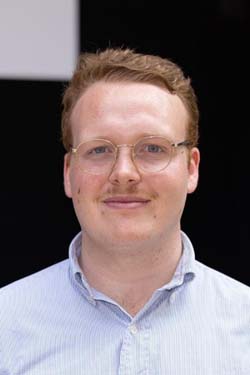
Lightning-fast Internet, super-safe med-tech
Harrison Lees
PhD candidate in applied electromagnetics
Imagine if we could all access home Internet speeds around 1,000 times faster than currently possible. Or have biomedical images taken that show everything an X-ray does, but with zero risk of tissue damage.
These are just two of the incredible potential outcomes that Harrison’s PhD research could deliver. He’s leading development of a tiny, all-silicon integrated circuit platform that will be the world’s lowest-loss broadband terahertz waveguide—enabling humanity to harness the remarkable properties of terahertz radiation.
Harrison’s work has already attracted R&D partners in the defence, medical, and agricultural industries, and he couldn’t be happier. "The process of seeing a system you conceived, designed and tested come to life is hugely satisfying," he says.
 Safeguarding against antisocial media
Safeguarding against antisocial media
Bridget Smart
MPhil candidate in applied mathematics and statistics
Social media's role in shaping our worldview is not yet fully understood. But when it comes to malicious posting, the effects are certainly being felt—in all areas of society, from politics to public health.
What impact does disinformation have on democracy? How susceptible are we to fake news? What happens when we get stuck in echo chambers? Bridget is finding answers through her MPhil, using large volumes of data and complex mathematics from various fields.
"It’s awesome to approach real-world issues from a mathematical perspective," Bridget says. "I’m excited by the possibility of making online spaces safer and stopping malicious actors from reaching and influencing vulnerable individuals."
 Reducing chronic pain for millions
Reducing chronic pain for millions
Diksha Sirohi
PhD candidate in digital health
Endometriosis is a big problem; it causes chronic, severe pain for 11% of natal females globally. And when that pain hits, everyday life becomes all but impossible.
Diksha—through her PhD research—is making a difference. In consultation with the Australian endometriosis community, she’s co-creating the world’s first evidence-based endometriosis digital health resource: EndoZone.
Crucially, EndoZone’s online tools will enable early diagnosis, which can significantly reduce future complications and minimise the condition’s impact. "I love being able to support and empower this community," says Diksha. "It’s incredibly rewarding."
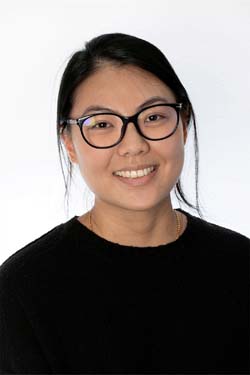 Alleviating chemotherapy side-effects
Alleviating chemotherapy side-effects
Shu Yie Janine Tam
PhD candidate in biomedicine
We’ve all seen devastating chemotherapy side effects in cancer patients—whether depicted in media or experienced by loved ones. We often notice hair loss, but equally as common are vomiting and diarrhoea.
PhD candidate Shu Yie is conducting research into chemotherapy-induced gastrointestinal disorders with the aim of developing an intervention. Her findings indicate it may be possible to prevent diarrhoea during therapy and significantly reduce intestinal tissue injuries.
"Carrying out carefully planned lab work is so fulfilling," she says. "I love seeing the results and knowing I’m the first person ever to comprehend them and their implications."
 Halting heart attacks
Halting heart attacks
Harry Carpenter
PhD candidate in mechanical engineering and medicine
Issues with his own heart—brought about by a background as an endurance cyclist—sparked PhD candidate Harry’s interest in heart health.
What he discovered was that the main contributor to heart attacks is coronary artery disease, where dangerous fatty plaques develop and restrict our arteries. Since heart attacks are one of the costliest and most significant causes of death worldwide, Harry decided to develop computer simulations to help predict who’s most at risk—and he’s succeeding.
"As a mechanical engineer—whose bread and butter is pumps and pipes—I think I have a unique ability to help doctors," Harry explains, "because the heart is the most complex and fascinating pump and pipe system in the world."
Harry’s simulations may also help triage patients and target effective treatments.
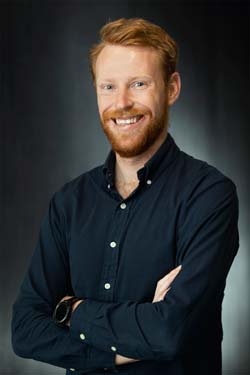 Predicting prostate cancer responses
Predicting prostate cancer responses
Joshua Hodgson
PhD candidate in medicine
Every prostate cancer patient is unique and will respond differently to different treatments—whether chemo, hormone, or radiation therapy. Unfortunately, many patients are treated ineffectively, wasting time on costly—and potentially harmful—anti-cancer medications.
Through his PhD and work with the University of Adelaide’s South Australian Immunogenomics Cancer Institute, Joshua is uncovering biological markers that can actually predict the way an individual might respond to a given therapy. His project involves taking patient tissues—acquired during prostate removal surgery—and culturing them in the lab, then studying how the tissues’ proteins change in response to therapeutics.
"I have the fortune of being able to investigate the changes I observe in our patient model in clinical trials," says Joshua. "This means I get to directly translate my research into the clinic and immediately impact patients' lives."
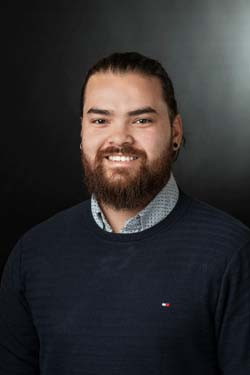 Understanding prostate cancer metabolism
Understanding prostate cancer metabolism
Jacob Truong
PhD candidate in medicine
Prostate cancer is the most diagnosed malignancy in men. While it’s treatable in its early localised stages, a small percentage of sufferers will experience disease relapse.
Jacob’s PhD research aims to identify molecular markers associated with these relapses. With this knowledge, patients who require further treatment after surgery can receive it, while those who don’t can avoid the side effects.
Jacob’s work involves studying the distribution of lipids and fatty acids in patient tissue. These can indicate when tumours are present—and some molecular compositions offer clues as to how aggressive the prostate cancer is.
"My research involves using complex imaging technology," says Jacob, "It’s exciting to be working with such cutting-edge equipment in an area that I know has the potential to change so many lives."
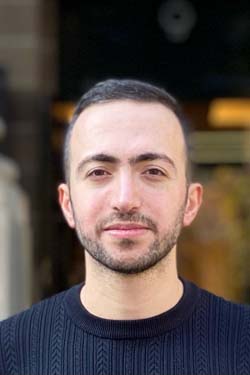 Making more green power more affordable
Making more green power more affordable
Sahand Karimi Arpanahi
PhD candidate in power systems engineering
Sahand’s PhD research could help make possible a critical step in Australia’s efforts to achieve its Net Zero target: cost-effectively adding more clean, renewable energy to the grid, while simultaneously lowering households’ electricity costs.
He’s developing novel methods for battery storage sizing and operation that reduce the unpredictable fluctuations in solar and wind power generation, enabling higher profit for renewable power stations and lower bills for consumers.
The CSIRO is now closely involved, and AEMO’s also interested. "I’ve really enjoyed the University’s research-focused environment," says Sahand, "and my supervisors’ focus on research quality, rather than quantity."
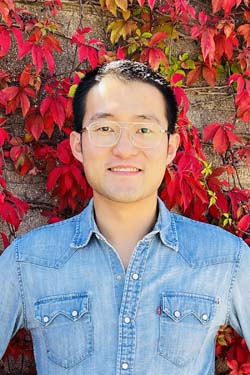 Advancing industry toward zero emissions
Advancing industry toward zero emissions
Xiaopeng Bi
PhD candidate in mechanical engineering
With heavy industry accounting for around 30% of global carbon emissions, the race is on to develop clean energy technology capable of providing the extreme heat required by industrial processes.
Particle-based energy sources, such as concentrated solar thermal energy, show promise. But upscaling and optimising them to meet real-world industrial demands has proven difficult. Enter Xiaopeng.
Through his PhD research—conducted in collaboration with US-based Sandia National Laboratories—Xiaopeng has developed a world-first, laser-based method for understanding the complex behavioural characteristics of particle-laden flows. More accurate and affordable than any existing technology, it promises to help make green heavy industry processes a reality.
"I’m driven by the sense of achievement in making a change for the future," he says.
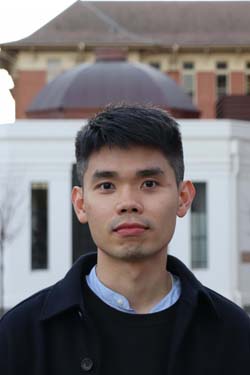 Predicting orbiting objects’ paths
Predicting orbiting objects’ paths
Chee-Kheng Chng
PhD candidate in machine learning
Things are getting pretty crowded up there; the US Space Command now tracks almost 35,000 objects in low Earth orbit. So in the interests of keeping valuable items safe, such as satellites, it pays to be able to accurately calculate their path, as quickly and easily as possible.
Through his PhD project Al4SPACE, Chee-Kheng is finding an answer. With support from defence prime Lockheed Martin, he’s developing a novel algorithm that can accurately estimate a satellite’s orbit simply by evaluating a long-exposure digital image of it.
Chee-Kheng is also exploring the use of various techniques to help identify distant stars, and reconstruct the shape of objects in space. "I love learning new stuff," he says. "The privilege of being able to sit down and ponder every day is something I don’t take for granted."
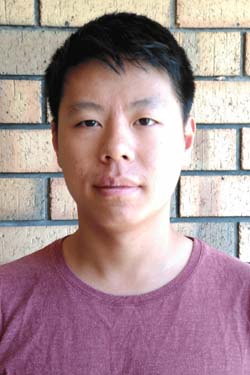 Improving quantum capabilities
Improving quantum capabilities
Thomas Kong
MPhil candidate in applied physics, engineering and material science
Chances are you’re familiar with ocean-going squid. You may even know of Netflix’s hit Squid Game. But nanotech SQUIDs? The latter stands for ‘superconducting quantum interference devices’, a class of ultra-high-precision magnetic field sensors—and they can do amazing things.
The defence sector is interested in their remote border-protection capabilities; they’re used in medical imaging to detect tiny signals generated by the brain; and they may one day play a central role in establishing communication between Earth and Mars!
To the delight of MPhil candidate Thomas—and the Department of Defence—his project on improving SQUID computer modelling has resulted in simulations that are more accurate, more realistic, applicable to a broader range of devices, and 10x faster.
"Working with the defence industry has been an invaluable experience," he says. "They’ve provided me with significant professional development and leads for potential future career opportunities."
 Detecting hypersonic hardware
Detecting hypersonic hardware
David Mcafee
PhD candidate in physical sciences
Hypersonic weapons and vehicles travel at extreme speeds and are highly manoeuvrable. Unsurprisingly, developing countermeasures for them is a huge area of interest for national security.
David’s PhD surrounds the use, prototyping, and packaging of lasers for deployment in this cutting-edge area. While the lasers he works with are designed for hypersonic vehicle detection, the work will likely also be useful for 3D mapping and LiDAR (light detection and ranging) technology. A large part of his team’s vision is having multiple purposes and applications for anything they develop.
High-level collaboration on this project—specifically with the Defence Science and Technology Group—means that field testing is anticipated to occur within just a few years.
"Experimenting with the latest lasers—some of the most advanced technology out there—is a huge privilege", David says, "not to mention a lot of fun."
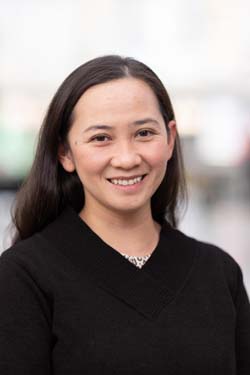 Making sustainable agriculture attainable
Making sustainable agriculture attainable
Sara Qanti
PhD candidate in global food and resources
Government policy has a critical role to play in soil and water conservation. But its impact can be minimal if gender’s influence on farming household decision-making isn’t well understood.
Sara’s PhD research is filling that gap. She’s analysing the decision-making process within smallholder agricultural households in rural Indonesia—and particularly women’s role in that process—to gauge how it affects the adoption of conservation practices.
Sara’s work is part of an umbrella project funded by the Australian Centre for International Agricultural Research, and also involves Indonesia’s Ministry of Agriculture, and non-government Indonesian research agencies. "I love learning new things outside my comfort zone," she says, "and meeting new people from all kinds of backgrounds."
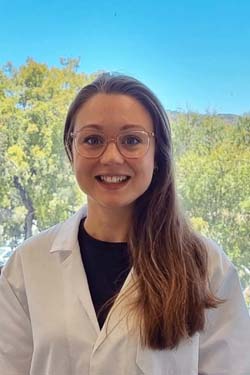 Mapping vino’s many moods
Mapping vino’s many moods
Claire Armstrong
PhD candidate in wine chemistry
So many factors influence the final product from a grapevine. Fruit left to mature for just one extra week can produce different aromas, flavours, colours, mouthfeels, and tastes.
Managing variance in grape metabolites can vastly improve a drop of "cab sav"—and that’s precisely what Claire aims to achieve through her PhD. By developing an index that rapidly determines variability within vineyards, she’s supporting the wine industry to make more informed viticulture and winemaking decisions.
"I love the diversity of experience in this field; one day I’m indoors in the lab, the next I’m out and about in a vineyard,” Claire says. “It’s also really rewarding to share research and watch real people apply my learnings and benefit from them."
Video testimonials
Apply now for a PhD in 2024
Over 300 research degree projects are on offer across many study areas, including:
- Health
- STEM
- Defence and space
- Agriculture, food and wine
- Energy

